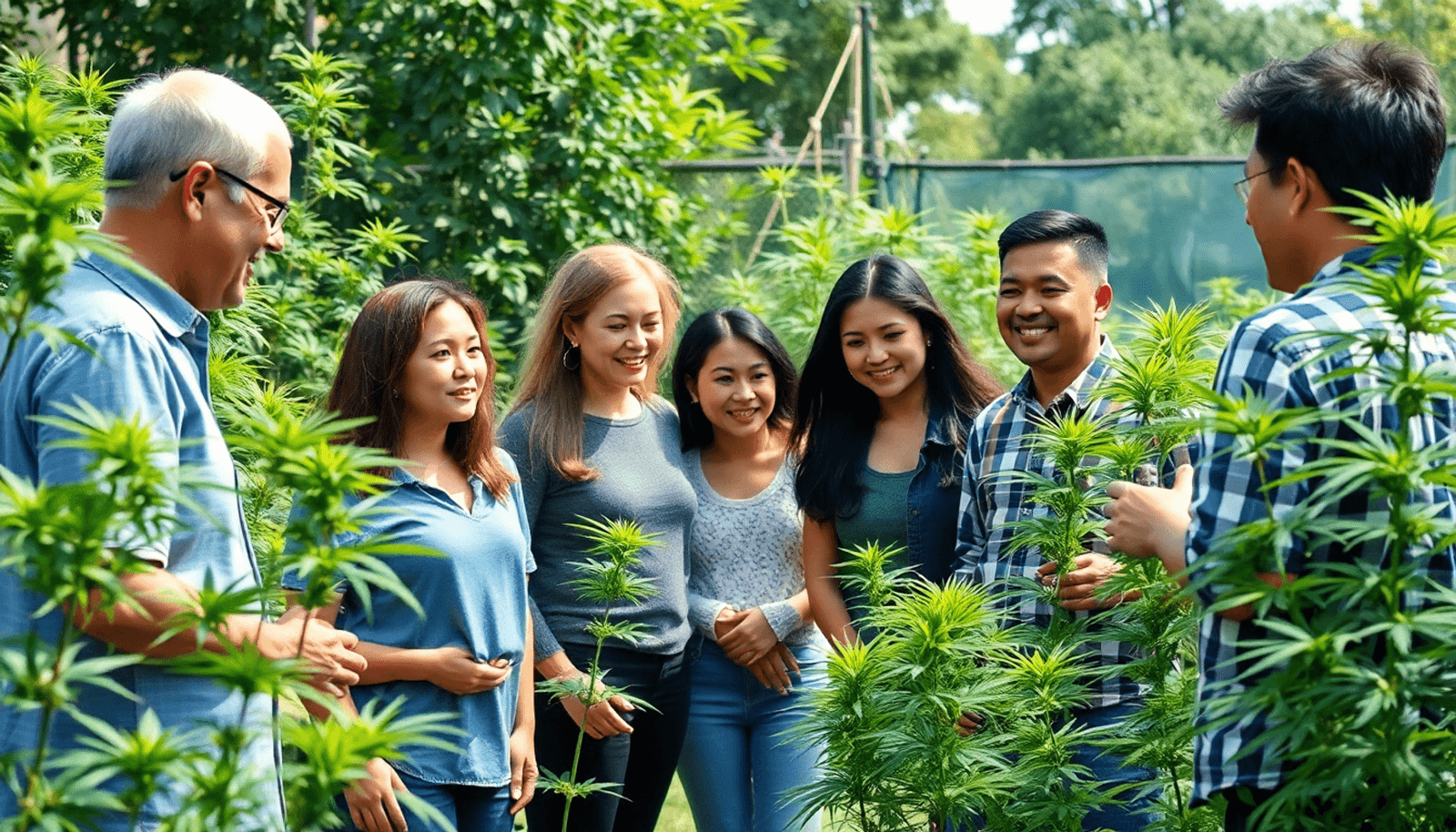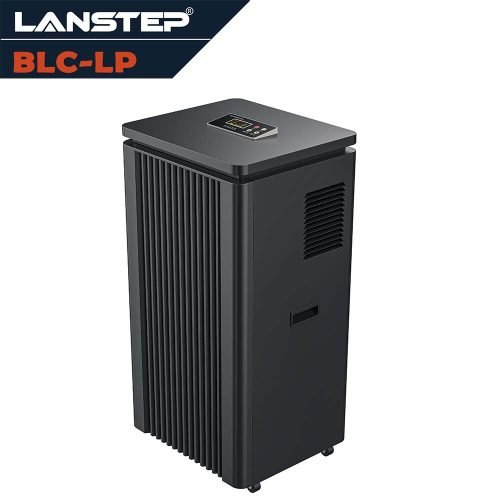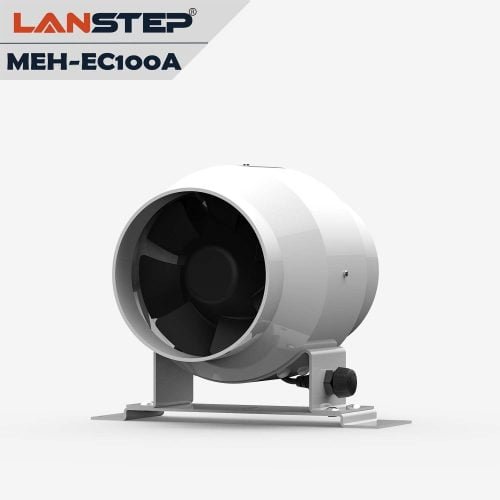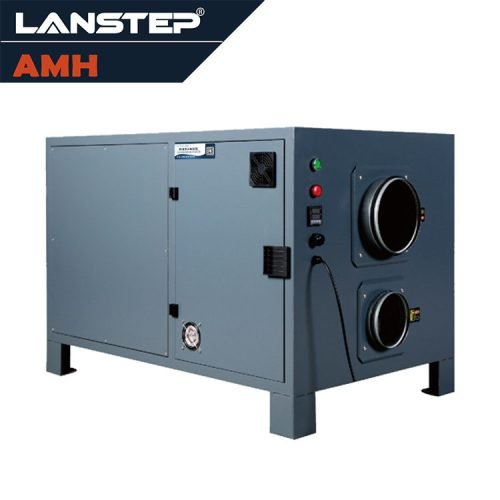A simple image shows a cannabis leaf divided in half. One side has a stethoscope and pills for medical use, while the other side features a cocktail glass for recreational use, all in soft colors.
Introduction
The discussion about cannabis use in society features an interesting debate captured in the phrase “Medical cannabis vs. Recreational cannabis: The False Dichotomy.” This conversation questions whether medical and recreational cannabis are really separate or if they overlap significantly.
- Medical Cannabis: Often viewed as a treatment option, it’s used to help with conditions like epilepsy and chronic pain.
- Recreational Cannabis: Typically associated with personal enjoyment and relaxation, much like how people consume alcohol socially.
Even though they have different meanings, the lines between medical and recreational use are often blurred. Many individuals use cannabis for both relief and enjoyment, indicating that these categories might not be as clear-cut as they appear. This overlap raises important questions about how we regulate and view cannabis in society.
Understanding this potential overlap is essential. It not only shapes public policy but also helps people make informed choices about their cannabis use. As societal views evolve, acknowledging the link between these two types of cannabis can lead to more thoughtful discussions and policies that reflect the complexities of how people use cannabis today.
Understanding Medical Cannabis
Medical marijuana is an important topic in health discussions today. It holds a lot of promise but can be complicated. Basically, medical cannabis is used to help heal and relieve symptoms of different health problems. The unique combination of cannabinoids in cannabis may provide relief when regular medicine doesn’t work.
Definition and Rules for Medical Cannabis
Medical cannabis is the use of the cannabis plant and its products to treat illnesses or ease symptoms. Each state has its own strict rules about how it can be used and distributed.
Regulatory agencies set guidelines that typically cover:
- Who can use it (eligibility criteria).
- Approved types of cannabis products.
- Licensed stores that sell it.
These rules help keep medical cannabis a controlled substance while allowing access for those who may benefit from it.
Conditions Treated with Medical Cannabis
Medical cannabis can help with various health issues, and scientific studies back up its uses. Some of the most common conditions treated include:
- Epilepsy: Cannabidiol (CBD), which doesn’t cause a high, has been effective in reducing seizures.
- Chronic Pain: People suffering from severe pain often find relief when regular pain medications don’t work.
- Multiple Sclerosis (MS): Some cannabis strains can help reduce muscle stiffness.
Other conditions that may benefit include nausea from chemotherapy, anxiety disorders, and inflammation.
How to Get Medical Cannabis
Getting medical cannabis involves a clear process that balances easy access with necessary rules:
- Doctor’s Recommendation: A qualified doctor evaluates the patient’s condition to see if medical cannabis could help.
- State Registration: Patients get approval and sign up for their state’s medical marijuana program, usually receiving an ID card to access dispensaries.
- Dispensary Access: Registered patients can buy medical cannabis from licensed dispensaries, ensuring the products meet state standards.
Medical cannabis sits at the crossroads of medicine and policy, offering relief while requiring careful oversight. Each step—from regulations to patient access—highlights the need for informed discussions as society adapts to these changes.
Understanding Recreational Cannabis
Recreational cannabis, or adult use cannabis, is meant for enjoyment rather than for medical reasons. This type of cannabis has been closely examined by lawmakers, with many states making their own rules about how it can be sold and distributed.
Rules for Recreational Cannabis:
- State Laws: The legality of recreational marijuana is different in each state in the U.S. States that allow it have specific rules about growing, selling, and owning cannabis products.
- Licensing and Compliance: Stores selling cannabis must follow strict licensing rules and regular checks to make sure they comply with state laws that regulate this growing industry.
 Differences in Accessibility Compared to Medical Cannabis:
Differences in Accessibility Compared to Medical Cannabis:
- Age Restrictions: One main difference between medical and recreational cannabis is who can access it. Recreational cannabis is usually only available to adults 21 and older, much like alcohol laws. This age limit is meant to protect younger people from possible misuse.
- Ease of Access: Unlike medical cannabis, which requires a doctor’s recommendation and registration with state programs, recreational users can buy cannabis straight from licensed stores without needing any prior approval.
Legal Comparisons with Alcohol:
- Similar Rules: The laws about recreational marijuana are similar to those for alcohol, including age limits, where you can buy it (like licensed dispensaries that are similar to liquor stores), and where you can use it.
- Public Use Laws: Both marijuana and alcohol have rules about using them in public. People usually can’t use cannabis in public places or while driving, which is aimed at keeping everyone safe.
Knowing these points is important for understanding the rules around using recreational marijuana today. The changing conversation about adult-use cannabis challenges old views and encourages us to rethink how we balance personal freedom with regulations.
Federal and State Laws on Cannabis
Understanding Cannabis Laws: Federal Ban vs. State Legalization
Cannabis laws in the U.S. are complicated because of the big difference between federal bans and state legalization. According to federal law, cannabis is classified as a Schedule I substance under the Controlled Substances Act. This means it is considered to have no accepted medical use and a high risk of abuse, placing it in the same category as drugs like heroin. This shows the federal government’s strict position against both medical and recreational cannabis use.
State Laws: A Mix of Rules
Even though cannabis is illegal at the federal level, states have chosen different paths. This has created a variety of regulations:
- Medical Cannabis: States like California were among the first to set up medical marijuana programs, allowing patients with certain conditions to use cannabis if a doctor says it’s okay. Each state has its own rules for growing, selling, and using cannabis.
- Recreational Cannabis: States like Colorado and Washington have made it legal for adults over 21 to buy and use cannabis, similar to alcohol. These states also have their own taxes and rules to manage the market.
The laws can differ widely from state to state regarding how much you can possess, what forms you can use (like edibles or concentrates), and whether you can grow your own cannabis at home.
Legal Issues Across State Lines
The difference between federal laws banning cannabis and state laws allowing it creates special challenges for users:
- Medical Users: People with medical cannabis cards might face legal trouble when they travel across state lines or go into federal areas where cannabis is still illegal.
- Recreational Users: Going into states that don’t allow recreational use can result in serious legal problems.
This clash between federal authority and state rights highlights the ongoing debate about cannabis policy in the U.S. As states try out different ways to regulate cannabis, the key question is whether national laws will eventually catch up with state-level changes.
The Connection Between Medical and Recreational Use
 Understanding the connection between medical and recreational use of cannabis is crucial. While legalized cannabis can have both risks and benefits, it’s important to recognize that the same substance can be used for different purposes. Medical use often involves a controlled dosage and specific strains aimed at treating certain health conditions, whereas recreational use is typically more casual and less regulated.
Understanding the connection between medical and recreational use of cannabis is crucial. While legalized cannabis can have both risks and benefits, it’s important to recognize that the same substance can be used for different purposes. Medical use often involves a controlled dosage and specific strains aimed at treating certain health conditions, whereas recreational use is typically more casual and less regulated.
Moreover, research has shown that there are significant differences in the effects of cannabis when used medically versus recreationally. For instance, a study published in the National Institutes of Health’s database highlights some of these differences, providing valuable insights into how each use affects the body differently.
People Using Medical Cannabis for Fun
The lines between medical and recreational cannabis use often blur, sparking ongoing debates. Some individuals easily switch between the two uses. As more states permit cannabis for medical purposes, some users may exploit this by claiming they have medical issues when they really just want to enjoy it. This mix of uses shows a broader change in society where cannabis is increasingly seen as a normal part of life, merging its healing benefits with fun activities.
Concerns About Misuse Among Young People and Regular Users
There are worries about how misuse is viewed, especially among young people and regular users. Many think that medical cannabis is often just an excuse for recreational use. Teenagers might view getting medical cannabis as a way to get around rules, which can distract from the real needs of those who need it for treatment. Regular users add to the confusion by using both medical and non-medical cannabis in similar ways, making it hard for authorities to distinguish between true medical use and casual marijuana use.
Finding Common Ground in Marijuana Policy Discussions
The ongoing debate about marijuana policies shows how important it is to find solutions that consider the complicated nature of cannabis use. User co-ops are becoming popular as innovative options, offering community-based ways to access and use cannabis. These models support shared ownership and distribution, helping to balance strict rules with personal freedom. By creating environments where medical needs and recreational enjoyment can coexist, user co-ops provide possible ways to fit into current legal systems.
This changing discussion encourages policymakers to rethink traditional views on cannabis use. It urges them to create rules that address different user experiences while keeping public health and safety a priority.
Survey Insights and Public Opinion on Cannabis Legalization
People’s views on cannabis legalization have changed a lot over the years. Surveys from well-known groups like the Gallup poll and the Pew Research Center reveal a clear shift in how adults in the U.S. feel about using cannabis.
U.S. Adults’ Opinions on Cannabis Use
More and more Americans support making both medical and recreational cannabis legal. Recent research shows that about two-thirds of U.S. adults are in favor of full legalization, showing a changing perspective on cannabis and its possible benefits.
Political Views: Republicans vs. Democrats
Political beliefs significantly affect people’s opinions on cannabis legalization. Research indicates that:
- Democrats tend to support full legalization more than Republicans.
- Among Republicans, there is ongoing discussion, with younger conservatives being more accepting of legalization than older ones.
These differences show how political views can shape attitudes towards drug policy.
Age and Racial Differences in Opinions
Age and race play a role in different opinions on cannabis use:
- Younger Americans, especially those under 30, are very supportive of legalizing both medical and recreational cannabis.
- Different racial groups show some varied opinions, but overall support for cannabis remains high in many communities.
Younger people generally favor more relaxed policies on cannabis, while older adults often worry about possible misuse and its effects on society.
Understanding these differences is important as they shape ongoing conversations about how society views and regulates cannabis use. As public opinion changes, lawmakers need to keep these factors in mind when creating future laws.
Effects of Different Rules on Medical and Recreational Cannabis Markets
The cannabis industry in the United States is shaped by a complex set of rules that differ widely from state to state, leading to various approaches for managing both medical and recreational markets.
State Regulation Differences
1. Medical vs. Recreational Markets
States like California have been leaders in cannabis legalization, showing the differences between medical and recreational uses. Medical cannabis usually needs patient registration, doctor approval, and specific health conditions, while recreational cannabis generally has age limits and allows wider access for consumers.
2. Licensing and Distribution
Some states tightly control how cannabis is distributed by giving out only a few licenses for growing and selling it. Other states have more relaxed licensing rules, creating a more competitive market.
Nonprofit Organizations vs. For-Profit Companies
1. Nonprofits’ Role
Nonprofit organizations are important in the medical cannabis field because they focus on helping patients. Their goal is to make cannabis easy to get and affordable for patients, without trying to make a profit.
2. For-Profit Enterprises
On the other hand, for-profit companies are key players in the recreational cannabis market. They introduce new ideas and competition, but their focus on making money can lead to higher prices because of their costs and profit goals.
Tax Policies on Marijuana Sales
1. Raising Money
Taxes are important for deciding how cannabis policies work. For example, Colorado has used tax money from cannabis sales to support public education and improve infrastructure.
2. Effect on Buyers
High taxes can drive consumers away from legal markets and lead them to illegal sources that aren’t regulated.
To grasp these rules, it’s essential to see how they influence the market and what consumers do. The distinction between medical and recreational cannabis is often misleading, pushing policymakers to find creative ways to balance rules with public good.
Case Studies from Different States: Lessons from California, Colorado, Oregon, Alaska, and Massachusetts
The path to legalizing and regulating cannabis varies by state. Each state provides important insights into the successes and challenges of developing policies that manage both medical and recreational use.
California
California is at the forefront of cannabis laws. It was the first state to allow medical cannabis in 1996 with Proposition 215 and later made recreational use legal in 2016 with Proposition 64. The state’s regulatory system uses a dual-licensing approach that supports both small craft producers and large businesses. This approach has created a diverse industry, but it also faces challenges like making sure rules are followed and dealing with too many products on the market.
Colorado
Colorado started its cannabis journey by legalizing medical use in 2000, and then in 2012, it passed Amendment 64 to allow recreational use. The state is recognized for its solid regulations that focus on quality control, taxes, and distribution. Colorado’s efforts to be transparent, like tracking cannabis from seed to sale, have set a standard for other states. However, there is still ongoing debate about balancing tax income with the effects on public health.
Oregon
Oregon allowed medical cannabis in 1998 and started recreational use in 2014 with Measure 91. The state has a smart tax policy that helps reduce illegal sales while funding public services like education and addiction treatment. Oregon’s “grow your own” rule lets people grow their own cannabis, but it also makes it hard to keep track of home-grown plants compared to those sold in stores.
Alaska
Alaska’s special approach shows its cultural values of personal freedom and community well-being. The push for legalization started with medical cannabis in 1998 and grew to include recreational use with Ballot Measure 2 in 2014. Alaska focuses on local control, letting communities set their own rules based on what they prefer, but this has led to different enforcement practices in various areas.
Massachusetts
Massachusetts approved medical cannabis in 2012 with Question 3 and allowed recreational use in 2017 through Question 4. A key part of Massachusetts’ approach is its focus on social equity programs aimed at fixing past wrongs from marijuana prohibition. However, the state still struggles with issues like slow licensing processes and obstacles for minority-owned businesses trying to join the market.
These examples show how complex cannabis regulations can be, with each state offering unique solutions while also facing similar challenges that others can learn from as they move ahead.
How Political Views Influence the Marijuana Policy Debate
 Politics significantly impact the conversation and progress of legalization efforts in the changing landscape of cannabis laws. The debate over cannabis use goes beyond legal and health concerns—it’s closely tied to the political beliefs that shape our society.
Politics significantly impact the conversation and progress of legalization efforts in the changing landscape of cannabis laws. The debate over cannabis use goes beyond legal and health concerns—it’s closely tied to the political beliefs that shape our society.
National Level Influence: President Joe Biden’s Approach
At the national level, President Joe Biden’s view on cannabis has been careful but forward-thinking. He supports decriminalizing cannabis and clearing records for past cannabis-related offenses, but he hasn’t fully backed legalizing it at the federal level. This balanced approach shows the political challenges involved in dealing with cannabis policy at such a high level.
Political Parties and Their Impact on Cannabis Policy
Political parties play a big role in shaping cannabis laws. Democrats usually support more extensive reforms, reflecting their broader beliefs in personal freedom and social justice. Many Democratic leaders push for policies that tackle racial inequalities in drug enforcement and create job opportunities in the cannabis industry.
In contrast, Republicans often focus on public health and safety, advocating for stricter rules. Some groups within the party see legalization as a way to enhance state rights and encourage economic growth through regulated markets.
Key Factors Affecting Political Discussion
Important factors affecting political discussion include:
- Public Health Concerns: Ongoing debates about the health risks of cannabis use continue to influence policy decisions.
- Economic Implications: The possibility of job creation and tax revenue from legal cannabis markets draws interest from both political parties.
- Social Justice Issues: Progressive discussions still focus on correcting historical wrongs related to marijuana prohibition.
These factors interact with each other, creating a situation where political views not only reflect but also influence public opinion on cannabis legalization. As different groups join this conversation, it’s important to understand the various viewpoints in politics to create effective policies that balance individual rights with community responsibilities.
Alternatives to Current Cannabis Sales Models: Exploring User Co-op Structures
 The changing landscape of cannabis sales pushes us to consider new options beyond traditional profit-focused models and government control. One option is the user cooperative model, which emphasizes community involvement, fair access, and shared benefits.
The changing landscape of cannabis sales pushes us to consider new options beyond traditional profit-focused models and government control. One option is the user cooperative model, which emphasizes community involvement, fair access, and shared benefits.
Possible Alternatives to Traditional Models
User cooperatives are based on collective ownership. Members share profits, decision-making, and operational tasks. This model could provide a way to decentralize control and build a sense of community. It challenges the usual split between medical cannabis and recreational cannabis by focusing on what users need instead of just making money. The common misconception that medical and recreational uses are separate can be addressed in cooperatives that cater to both health-related and leisure needs.
Additionally, user co-ops can also explore partnerships with local broadband providers, such as those linked to the broadband initiatives, which could enhance their operational efficiency and communication within the community.
Benefits of Nonprofit Approaches
- Community Involvement: Cooperatives promote active participation from local members, ensuring that community voices guide the business.
- Equitable Access: By sharing profits, co-ops can help lower costs for consumers, making cannabis more affordable.
- Focus on User Needs: With less focus on maximizing profits, cooperatives can prioritize quality products that meet diverse user needs.
Drawbacks of Cooperative Models
- Complex Management: Running a cooperative involves making decisions by consensus, which can take time and slow down operations.
- Limited Funding: Nonprofit models may find it harder to raise money compared to for-profit businesses, affecting their growth and innovation.
- Regulatory Challenges: Dealing with complicated regulations can create extra hurdles for cooperatives trying to enter the market.
For instance, navigating the regulatory landscape can be particularly challenging for new cannabis businesses. However, understanding these regulations is crucial for successful market entry. Resources such as the Cannabis Information for Business provided by local governments can offer valuable guidance in this regard.
Looking into these alternative models sparks conversations about how we can shape our cannabis markets in ways that reflect community values and enhance user experiences. By understanding and adopting different sales frameworks, we can create a more inclusive approach to cannabis distribution.
Conclusion
The debate over medical cannabis vs. recreational cannabis often presents a misleading choice, suggesting these two types are completely different when they actually share a lot in common. This overlap makes it harder to create effective regulations and complicates discussions about public health, which affects how society thinks about and regulates cannabis use.
Viewing medical cannabis merely as a way to justify recreational use diminishes its healing properties and overlooks the complex experiences of users. The line between medical necessity and recreational enjoyment is becoming less defined, reflecting wider trends in legalization and public attitudes.
As we adapt to these changes, it’s important to keep informed about cannabis laws in your state. Knowing the differences and connections between medical and recreational cannabis can help you make personal choices and influence public policy, ensuring that both health benefits and personal freedoms are respected.
Engage in the ongoing discussion, challenge traditional views, and consider how these forms of cannabis use relate to society. Use your knowledge to contribute meaningfully to the conversation about marijuana policy—an issue that matters greatly for individual rights and community health.

 Differences in Accessibility Compared to Medical Cannabis:
Differences in Accessibility Compared to Medical Cannabis:









